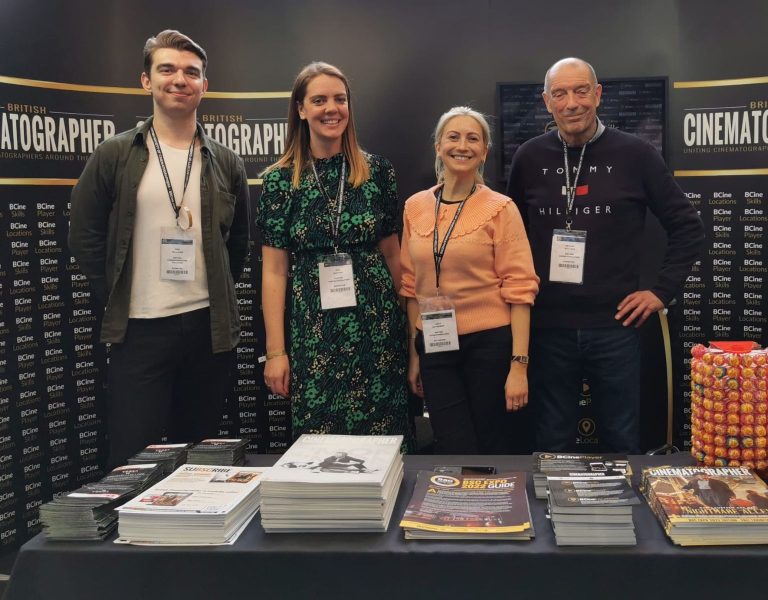Lighting a dark past
Portraying a dark stain on Ireland’s past with humour and light poses a daunting challenge, particularly when many victims are still alive. In a new series about the Magdalene laundries scandal, cinematographer Si Bell reveals how it was achieved.
A simple online search of scandals associated with the Roman Catholic Church reveals the grim reality of the Magdalene laundries, prominently standing among a long list of ignominious acts.
It’s a particularly damning indictment when it appears alongside the Crusades, Spanish Inquisition, the Galileo Affair, Pope Pius XII’s alleged silence during the Holocaust and the more recent Vatican banking scandal.
Overseen primarily by Catholic religious orders from the 18th to the late 20th century, the system operated under the guise of “rehabilitation” for “fallen women”, encompassing unmarried mothers, prostitutes, and abuse victims. However, behind the façade stood harrowing sites of abuse and injustice, perpetuating the suffering of countless women and children. For nearly seven decades, circa 10,000 females toiled in unpaid manual labour under the control of nuns in Ireland until as recently as 1996. More than a quarter of those who endured the laundries were sent there by the Irish state.
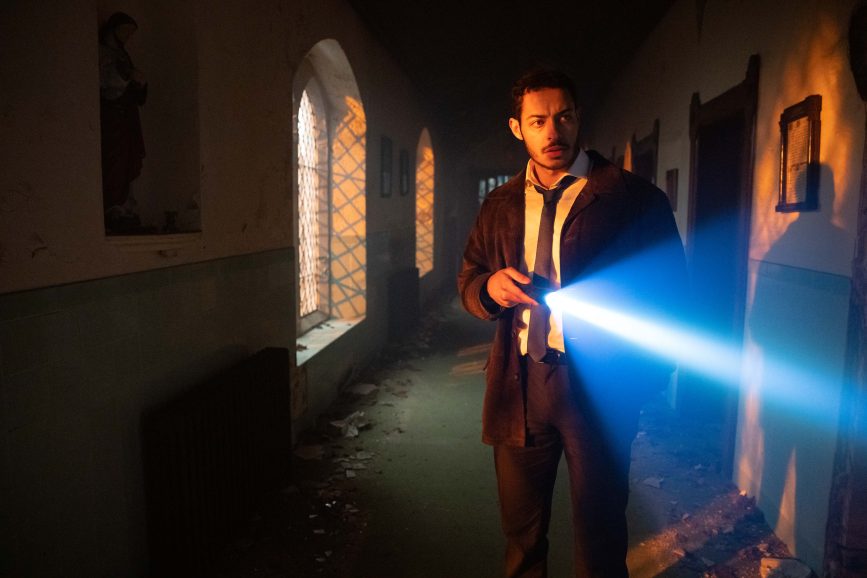
A new dramatisation of this shocking period comes in the form of the upcoming BBC1 series The Woman in the Wall, a six-part gothic thriller by Motive Pictures that combines history and in-depth research to create a sobering narrative.
Ruth Wilson plays Lorna Brady, a resident of the quaint, fictional town of Kilkinure set in County Mayo. One fateful morning, her life takes an eerie turn when she discovers a corpse inside her own home.
Set against the apt bleak, ashen elements of the Emerald Isle, any similarity between the disconcerting storyline is purely coincidental. In fact, there was a conscious effort to counter the greyness.
“We shot it at the end of the summer in 2022 in the bright and colourful village of Portaferry and there’s a lot of colour there naturally, so we were kind of going against the darkness really,” says cinematographer Si Bell BSC, who worked on all episodes except three and four, which were directed by Rachna Suri and lensed by Steven Ferguson. “We created quite a saturated grade and we tried to push that with the colours we used in the lighting and production design. The red room is all red. We used primary green light sometimes and we had vibrant production design and coloured houses to give the show even more vibrancy.”
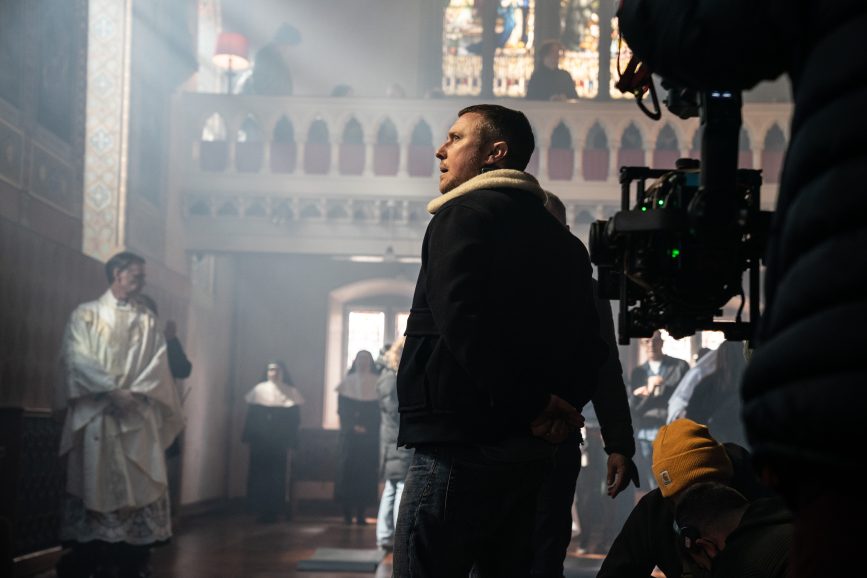
This is not the first time the subject has been addressed; it has been depicted in various films, most notably in the critically acclaimed The Magdalene Sisters in 2002 and Judi Dench’s moving portrayal of Philomena in 2013. Interestingly, that same year then Irish prime minister (Taoiseach), Enda Kenny, formally apologised on behalf of the state for its role in the scandal.
In The Woman in The Wall, writer Joe Murtagh took on the challenging task of injecting dark humour into the script. However, doing so with such an emotive subject matter was a bold move, especially when a number of the victims are still alive.
Amongst the survivors was the late outspoken Irish singer Sinéad O’Connor, who has openly shared her experience at the notorious Sisters of Our Lady Charity laundry in Dublin when she was just 14 years old, labelled a “problem child”. She later converted to Islam.
“It was always going to be a tricky balancing act,” adds Murtagh. “Of course, it’s of paramount importance to tell this particular story with sensitivity, but for me it was just as important to tell it in such a way that it would reach as wide an audience as possible, because one of the most unfortunate aspects of the history of the Magdalene laundries is just how few people outside of Ireland know about it.”

Despite boasting a powerful cast with Wilson in the lead role, supported by Daryl McCormack (Peaky Blinders) and Simon Delaney (The Conjuring 2), the creators had their doubts about how audiences might receive the series. “It’s a hard topic to deal with,” Bell says. “We bring comedy and lightness to the genre to entertain, but juxtaposing it with such a serious story isn’t an easy task.”
Filming began shortly after the much-anticipated ARRI Alexa 35 camera went on general release, which meant The Woman in the Wall was one of the first productions to use one.
“It gives the extra security to shoot on a TV schedule owing to its sheer versatility and handling,” he says. “It enabled us to use a pretty slow old Cooke zoom lens when we were doing night, high speed work, pushing the extended ISO using the enhanced sensitivity range. We were doing a lot of night scenes and we used ES ISO which was amazing. In terms of the sensitivity, it doesn’t get noisy when you bump up the ISO, so the biggest difference is how clean it is compared to other cameras.”

Bell says another key feature of the Alexa 35 is its extended latitude, a total of 17 stops. “There were several scenes where the light massively changed outside,” he continues. “I was worried that when we got to the grade it was going to be clipped and we weren’t going to be able to pull it back, but it was all there.”
He was also impressed with the viewfinder, which he says is way ahead of the competition. “The Alexa 35 viewfinder is just so much clearer and with the flip out screen is so useful,” he says. “I always use the viewfinder for handheld camera work so for me it makes a massive difference. The image is so clear, with high resolution and sharp.”
DIT Cel Bothwell-Fitzpatrick says the internal NDs and Enhanced Sensitivity EI options were invaluable for getting the right exposure in the fast paced shooting schedule and changeable Irish weather conditions. “Plus, having the ability to dial these settings in remotely via the HI-5 focus handset or Camera Companion app was brilliant,” he adds.

What’s more, the production was charged with three different deliverables: HDR Dolby vision grade, SDR and HLG version. This meant a particular workflow was needed.
“The new ARRI Colour Science and the new ARRI Look File 4 helped with this,” Bell continues. “ARRI has separated the Colour Transform from the creative look file and it’s all LOG to LOG. Therefore, as it’s not baking in the Colour Transform, the process of creating HDR and SDR versions is more streamlined.”
Elsewhere, astute implementation of light as a stark contrast to the sombre atmosphere does not escape the discerning viewer, either. A particular scene in episode one, “Back to Life”, stands out vividly, where Lorna finds herself in her living room, bathed in a brilliant, ethereal glow reminiscent of Armageddon or the second coming of Jesus Christ. Bell elaborates that achieving this effect required a skilful fusion of real exterior elements and artfully crafted artificial lighting on the opposite side.
“It wasn’t natural light but a studio build,” he says. “We found the exterior of the house on a Portaferry street, from which you can see the sea. It was the perfect house for Lorna and had an amazing sense of scale and place. We built the interior set inside our studio and used Tungsten 12K Fresnels with an urban sodium paper gel. These were outside the windows of the set replicating the sodium streetlights.”

Inside the house, or the studio to be precise, Bell praises the work carried out by designer Tom McCullagh. “On the inside we had to knock down the wall and work inside it, for the part where the body goes inside,” he says. “The set was designed so we could do this and shoot from inside the wall. Also, it was designed so we could see the view outside the window, such as Lorna’s car and the street beyond. Tom built the wall/hedge and road outside of the window and replicated what was on location. His attention to detail was incredible, creating a sense of realism and scale to the production design and the cinematography. We never felt like we were in a set.”
Despite a tight script that didn’t allow for much improvisation, Bell explains how director Harry Wootliff gave McCullagh, gaffer Seamus Lynch and Wilson a lot of autonomy in what was a “super collaborative and creative” process.
“Harry wanted it to be fluid,” he adds. “Seamus was amazing and the lighting setup that he rigged in the studio was very flexible. Everything was on motors and easily controllable and he also created different soft boxes, so we could flip between day and night super quick. We had large Tungsten lamps, plus lots of LED for the soft boxes and options of softer light.”
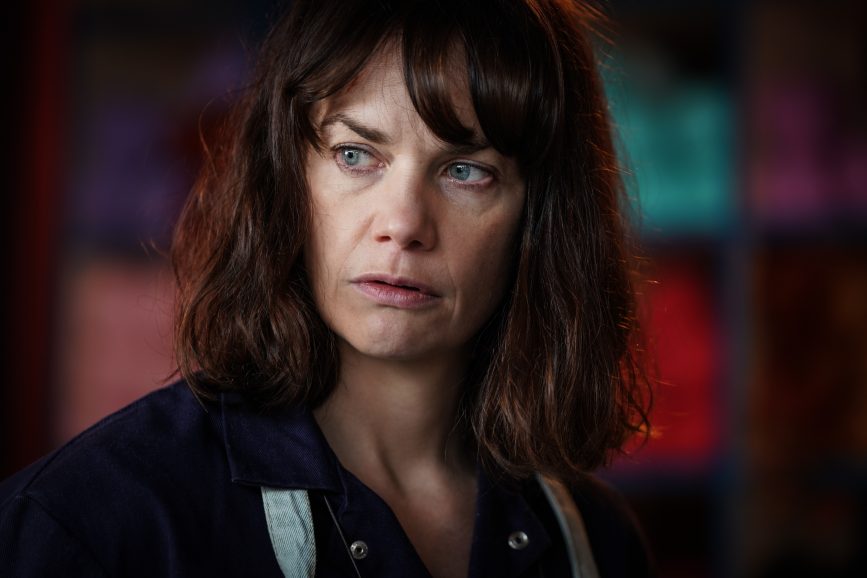
Bell adds that Wootliff and Wilson didn’t have any strict rules or plans for blocking because they work so instinctively. “We often didn’t know what she’s going to do until she got there,” he says. “Then, suddenly, she’ll just do something, and you’ll be like, ‘Oh my God, that’s amazing – how do we adapt that?’ The focus puller, Mike Lockhart, worked brilliantly that way so it was a dream.”
For Wilson, “there was a symbiosis and trust” between her, Bell and Wootliff. “It meant Si could move to me and I to him,” she says. “As a result, there’s an intimacy to the image which connects us emotionally to the character. This helps to ground the material and tone of the show.”
Bell shares a number of sequences, including one where through a corridor, Wilson was shot with the room pivoting around her, with close-ups of the character’s face and then pulling away from her.
“Even though it’s all broken up, we managed to do it in one handheld developing shot and we lit it with really big soft bounce on a machine outside the window where we basically put a 20 by 40 foot ultra bounce with two ARRI MAXs bounced into it,” Bell adds. “You could see the whole window from the inside as we positioned the bounce above it out of shot and there was this really soft, natural ambient coming in that balanced the exposure. Then we’d rig on the ceiling with a bit of soft warm top light.”
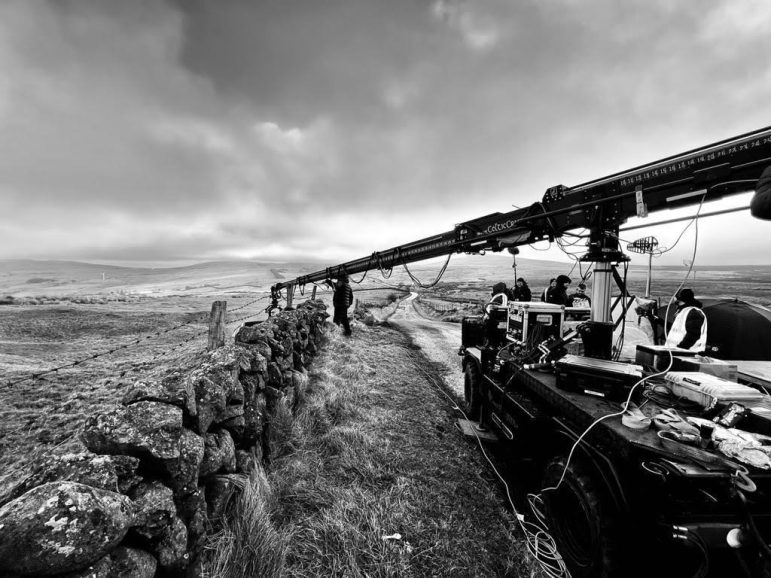
Bell says “every location was rigged in that way” to give that natural look. In the studio, we didn’t have soft box top light and holes in the ceilings,” he adds. “We had hard ceilings and never wanted it to look like a set, but we also needed to light it in a way that could give us freedom. So, we had to strike the right balance and I think that was the biggest technical challenge – working out which location needed what.”
Yellowmoon, in Holywood, Northern Ireland, was responsible for post-production and Bell says the team there was outstanding. “We had a live grade set up on set and with Yellowmoon we created a LUT and tweaked the CDL shot by shot on set,” he adds. “We started this information in the grade making the process very streamlined.”
Wootliff says she “felt everything rested on the audience investing in Lorna” and understanding how the character was feeling and seeing the world. “When Ruth was on screen we should never step out of her perspective,” she adds. “Ruth and I had worked together on my feature film, so we already had a short hand and a trust. Both Si and I agreed that we wanted to work by responding to the actors and not over planning blocking or shots but use our prep time to work out a distinct style and mood that could be our guide.”
In a world where dark chapters of history can be lost or (purposefully) forgotten, The Woman in The Wall stands as a testament to the resilience of those who endured the Magdalene laundries and serves as a reminder of the importance of exposing and learning from the shadows of the past.
The Woman in The Wall will launch on 27 August on BBC1 and BBC iPlayer in the UK and on Showtime in the US.







